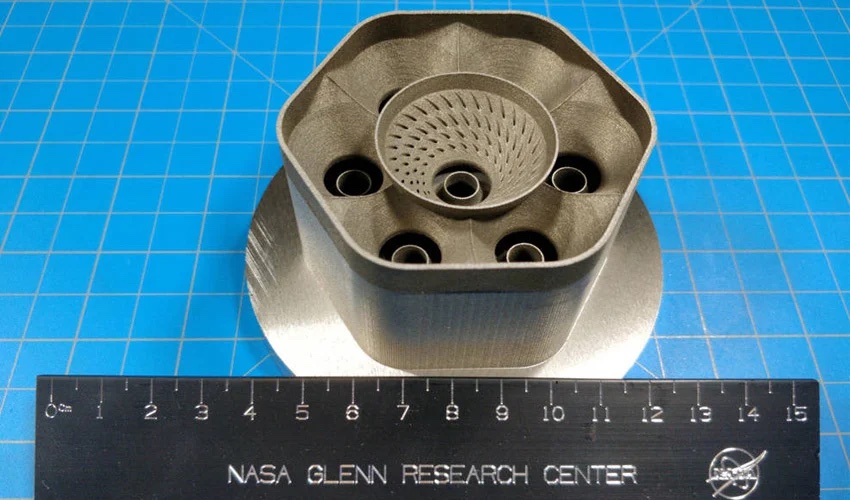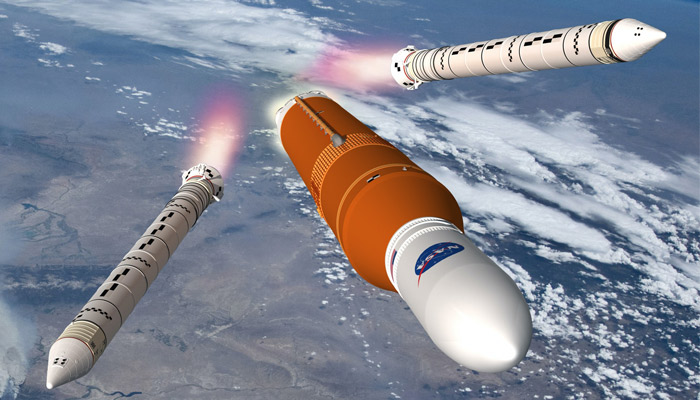NASA Develops 1000 Times Stronger Metal Alloy Using 3D Printing

A team of researchers at NASA has developed a new metal alloy called GRX-810, that is 1000 times stronger than any previously developed alloy. Probably even more interesting is the fact that for this project, the team of professionals relied entirely on 3D printing. To be more specific, additive manufacturing was used to uniformly disperse nanoscale oxides in the alloy, providing better thermal and mechanical properties. That results in the material having the ability to withstand temperatures up to 1,093°C (1999.4 °F) and could have a significant impact on the manufacturing of, for example, rocket engines.
The metal alloy was strengthened by oxide dispersion, a method in which small oxide particles are scattered into a metal matrix to increase its strength, heat resistance and ductility. Although NASA hasn’t revealed what metal was originally used, in most cases applying this technique, nickel or iron-aluminum alloys are used. Regarding oxide dispersion, it is also important to mention that the process is usually very time consuming and expensive. However, by relying on additive manufacturing and thermodynamic modeling, the team was able to significantly reduce time and cost, and also claims to have discovered the optimal alloy composition in just 30 simulations.

The new alloy could impact the manufacturing of some rocket parts (photo credits: NASA)
Development and Characteristics of NASA GRX-810
The researchers at NASA used very accurate computer models to determine the composition of GRX-810, particularly in terms of the amount of oxides used. They then used 3D printing to uniformly inject the nanoscale oxides. While the exact process has not been revealed by NASA, this type of dispersion allowed them to quickly and inexpensively obtain a durable alloy, that was more moldable and could withstand extreme temperatures. Its strength was also significantly increased. According to the team, GRX-810 is up to 1,000 times stronger than materials developed in the past. Dale Hopkins, deputy project manager of NASA’s Transformational Tools and Technologies project, added, “This breakthrough is revolutionary for materials development. New types of stronger and more lightweight materials play a key role as NASA aims to change the future of flight. Previously, an increase in tensile strength usually lowered a material’s ability to stretch and bend before breaking, which is why our new alloy is remarkable.”
It is easy to imagine the impact that the GRX-810 developed by NASA could have on the aerospace industry. For example, it could be used to manufacture jet engines to reduce fuel consumption, thanks to its greater durability and thermal resistance. In addition, operating and maintenance costs would also be reduced. When asked about the performance of GRX-810, the team explained that the alloy has twice the strength to withstand fractures; three and a half times the flexibility to bend before breaking; and more than 1,000 times the durability when exposed to high temperatures. These are qualities that open up a field of possibilities for aerospace!
This is just the first step for NASA, which plans to build on thermodynamic modeling and additive manufacturing, to go even further in creating innovative materials. Tim Smith, a materials scientist at NASA’s Glenn Research Center in Cleveland and one of the inventors of the new alloy, concludes:
“Applying these two processes has drastically accelerated the rate of our materials development. We can now produce new materials faster and with better performance than before. What used to take years through a trial-and-error process, now takes a matter of weeks or months to make discoveries.”
You can find out more HERE. What do you think of NASA’s GRX-810 alloy? Let us know in a comment below or on our Linkedin, Facebook, and Twitter pages! Don’t forget to sign up for our free weekly Newsletter here, the latest 3D printing news straight to your inbox! You can also find all our videos on our YouTube channel.
*Cover photo credits: NASA







Regarding 1,093°C (33,9674 °F), you may want to double-check the temperature conversion:.
I’d love to be a part of something like this. Should have been an engineer, and not a forester hah!